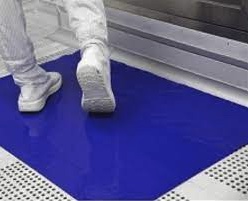—
### Mastering Clean Room Hygiene: 10 Essential Tips for Using Sticky Mats
Maintaining a clean and sterile environment in clean rooms is crucial in various industries, from pharmaceuticals to semiconductor manufacturing. One key tool in this effort is the sticky mat, designed to capture dirt and contaminants before they enter the controlled setting. Here are 10 essential tips for the effective use of sticky mats to ensure your clean room remains a contamination-free zone.
#### 1. **Strategic Placement of the Mat**
The first and perhaps most crucial step is to position the sticky mat directly in front of the clean room door. This helps in capturing dirt and dust from workers’ shoes before they step inside, significantly reducing the risk of contamination.
#### 2. **Sufficient Width of the Mat**
Ensure the sticky mat is wide enough to cover the entire entry way. This way, regardless of which side a worker steps on, the mat efficiently captures debris.
#### 3. **Adequate Length for Effectiveness**
For optimal effectiveness, the mat should be long enough to allow for two to three steps. This ensures that both feet come into contact with the mat, further preventing the entry of contaminants.
#### 4. **Vertical Mat Positioning**
If you’re working with a doormat-sized sticky mat, consider repositioning it vertically. This adjustment ensures both feet come into contact with it, maximizing its dust-catching potential.
#### 5. **Clean the Installation Area**
Before installing the mat, it’s vital to clean the flooring underneath using a solution of 70% IPA (Isopropyl Alcohol) and 30% water. This mixture effectively removes any old adhesive and debris, ensuring a smooth installation process.
#### 6. **Use on Hard Flooring Only**
Sticky mats are designed for hard flooring types. Installing them on carpeted surfaces reduces their effectiveness and can cause installation challenges.
#### 7. **Carefully Remove the Top Sheet**
When it’s time to replace the top layer of the mat, do so slowly and carefully. This helps to prevent any trapped dirt and dust from becoming airborne, which could compromise the cleanroom environment.
#### 8. **Optimal Locations for Sticky Mats**
While the primary placement is outside the clean room door, sticky mats are also beneficial in staging areas, gowning regions, and hallways leading to the clean room. These strategic placements ensure minimal dirt and dust make their way into the clean room.
#### 9. **Choose Quality Mats Like Enviromat®**
Opt for high-quality sticky mats such as Enviromat®. These mats come in a variety of sizes and colors, adapting to the specific needs of cleanroom environments. Their quality ensures reliable performance in maintaining clean standards.
#### 10. **Maintaining Sterility Assurance Levels (SAL)**
Sticky mats are instrumental in maintaining Sterility Assurance Levels (SAL). They reduce contamination risks from debris carried into the clean room by personnel and equipment, thereby supporting a sterile environment.
By following these tips, you can ensure that your clean room remains a controlled, contamination-free space, critical for operational efficiency and product quality. Sticky mats are a simple yet powerful tool in your clean room maintenance toolkit.

